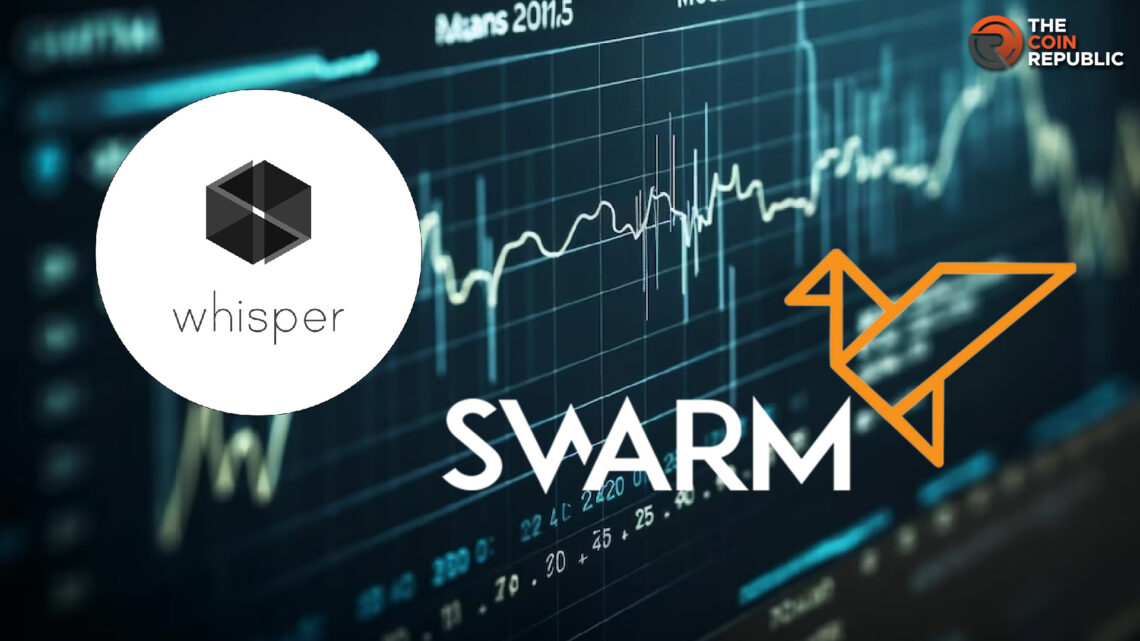- 1 Whisper enables private, encrypted p2p messaging between dApp users and machines.
- 2 Swarm offers decentralized alternatives to centralized cloud file storage and content distribution.
- 3 Components like these enable the building of fully serverless and censorship-resistant Web 3.0 applications.
The growth of blockchain-based ecosystems requires specialized protocols for decentralized alternatives to traditional centralized messaging and file storage. Whisper and Swarm provide peer-to-peer solutions tailored for the Web 3.0 technology stack and its unique infrastructure needs.
We gain useful insights into developing robust communication and data handling for next-generation decentralized applications by investigating their technical architectures and real-world applications. As blockchain adoption accelerates, purpose-built protocols like Whisper and Swarm will become increasingly vital in architecting serverless dApps beyond the vulnerabilities of legacy systems.
Analyzing these tools for encrypted messaging, distributed file storage, and content delivery sheds light on the possibilities for building censorship-resistant and fully decentralized user experiences.
Introducing Whisper Messaging Protocol
The Whisper Messaging Protocol refers to a communication framework designed to facilitate secure and private messaging within decentralized networks. Operating within blockchain technology and peer-to-peer networks, the Whisper protocol aims to enable discreet communication between participants by utilizing advanced encryption and a decentralized architecture.
In essence, Whisper serves as a means of exchanging messages while maintaining high levels of confidentiality and data privacy. It achieves this by employing various encryption techniques that ensure only the intended recipients can decrypt and access the messages.
This protocol is particularly relevant in environments where participants seek to communicate sensitive information without compromising their privacy or the integrity of the exchanged data. By offering a secure messaging solution, the Whisper Messaging Protocol contributes to the broader goal of fostering trust and confidentiality within decentralized networks, enhancing their usability for various applications beyond financial transactions.
Key features include:
- End-to-End Encryption: For privacy, Sender and recipient identities are anonymized with encrypted payloads.
- Topic-Based: Messages use topic strings for receivers to subscribe to specific message streams.
- Light Node Support: SyncMode API allows light nodes to get recent messages without full blockchain sync.
- Pluggable Proofs: Custom proof-of-work algorithms to mitigate spam based on the use case.
- Message Relay: Network nodes relay messages until they expire to extend reach beyond direct peers.
Whisper operates at Layer 2 off-chain for scalability, using the base blockchain as a Proof-of-Work anchor. The messaging is asynchronous, with messages dropping if recipients are offline. The protocol provides the underlying p2p plumbing for communication between dApp users and ecosystem participants.
Technical Architecture
Under the hood, Whisper follows a publish-subscribe pattern. Senders broadcast messages to an overlay network as topics without knowing the recipients. Nodes relay messages for a time-to-live (TTL) period. Subscribers monitor specific topics to receive related messages.
Messages have an expiry envelope for metadata like TTL and topic and an encrypted payload envelope with the sender-generated symmetric key. Topic strings are mixed through a bloom filter to obfuscate interests. Whisper is agnostic to message content. The API provides ultimate flexibility for dApp communication needs.
Major Use Cases
Whisper facilitates a variety of decentralized communication applications, including:
- Chat dApps: Encrypted messaging between dApp users leveraging Whisper’s privacy features.
- Transaction Notifications: Send payment confirmations and account alerts to users.
- Network Announcements: Broadcast ecosystem news and updates.
- Data Feeds: Light nodes can sync decentralized data streams and events.
- Location Tracking: Exchange geo-coordinates between entities like autonomous vehicles.
- Internet of Things: Machine-to-machine messaging for automation and analytics.
- Gaming Interactions: Secure in-game chat and notifications for players.
Introducing Swarm for Storage
Swarm for Storage refers to utilizing a decentralized storage system within blockchain and distributed ledger technologies. Swarm is designed to provide a secure and efficient means of storing and retrieving data in a decentralized and peer-to-peer network.
Swarm for Storage implies using Swarm as a solution for data storage needs within decentralized applications (DApps) or blockchain ecosystems. Unlike traditional centralized storage services, Swarm operates on a network of nodes, with data distributed across multiple locations. This approach enhances data redundancy, security, and availability, making it particularly valuable for applications that require robust and tamper-resistant data storage.
Swarm offers a way to store data and incentivizes network participants to provide storage space and bandwidth in exchange for cryptocurrency rewards. Ultimately, “Swarm for Storage” represents a decentralized, blockchain-based alternative to conventional cloud storage solutions, aligning with the principles of security, data integrity, and censorship resistance often associated with blockchain technology.
Key features include:
- Filechunking: Files are split into encrypted chunks stored across nodes.
- Erasure Coding: Data is redundantly spread across nodes to survive outages.
- Version Tracking: File changes get updated across nodes via manifest tracking.
- Incentivization: Service providers earn rewards from data usage.
- Censorship Resistant: No central entity controls file availability.
- Streaming Support: Nodes can stream real-time video and audio.
- Mutable/Immutable: Choose between mutable, versioned, or immutable, tamper-proof data.
This decentralized approach aims to build an alternative to the centralized cloud hosting providers that dominate today. The modular architecture integrates incentives and crypto-economic mechanisms tailored for different dApps.
Technical Architecture
Behind the scenes, files get split into variable-sized chunks encrypted via ECIES symmetric streams. Manifests track metadata like version history and content hashes. Retrieval happens by requesting chunks from the network via manifest syncing.
Nodes get incentivized to provide reliable long-term file storage via service fees and swarm rewards. Erasure coding replicates data across multiple nodes for redundancy against outages. Fetching is optimized by caching popular content on edge nodes.
Major Use Cases
With robust decentralized storage and hosting, Swarm opens up new dApp possibilities:
- Serverless Web Hosting: Store static web content across swarm nodes to build fully decentralized apps.
- File Storage: Provide mutable, versioned file systems for Web 3.0 applications.
- Content Distribution: Censorship-resistant video and media-sharing communities.
- Decentralized Compute: Store results of computation by blockchain oracles securely.
- Data Markets: Monetize APIs and data streams through the Swarm network.
- Provenance Tracking: Certify the authenticity and origin of digital artifacts like art and documents.
Summary
As blockchain technology proliferation continues, purpose-built protocols like Whisper and Swarm fill critical gaps in the Web 3.0 decentralized stack. They provide robust peer-to-peer messaging, storage, and streaming solutions tailored to the unique needs of emerging decentralized ecosystems.
These protocols unlock new possibilities by empowering developers to build serverless dApps beyond the vulnerabilities of centralized systems. Their scalable support for encrypted communication, distributed file sharing, and censorship-resistant content delivery will only grow more indispensable as blockchain adoption accelerates. Analyzing their technical underpinnings and real-world applications offers a valuable perspective on the future of resilient and decentralized network architectures for Web 3.0 and beyond.

Adarsh Singh is a true connoisseur of Defi and Blockchain technologies, who left his job at a “Big 4” multinational finance firm to pursue crypto and NFT trading full-time. He has a strong background in finance, with MBA from a prestigious B-school. He delves deep into these innovative fields, unraveling their intricacies. Uncovering hidden gems, be it coins, tokens or NFTs, is his expertise. NFTs drive deep interest for him, and his creative analysis of NFTs opens up engaging narratives. He strives to bring decentralized digital assets accessible to the masses.


 Home
Home News
News










